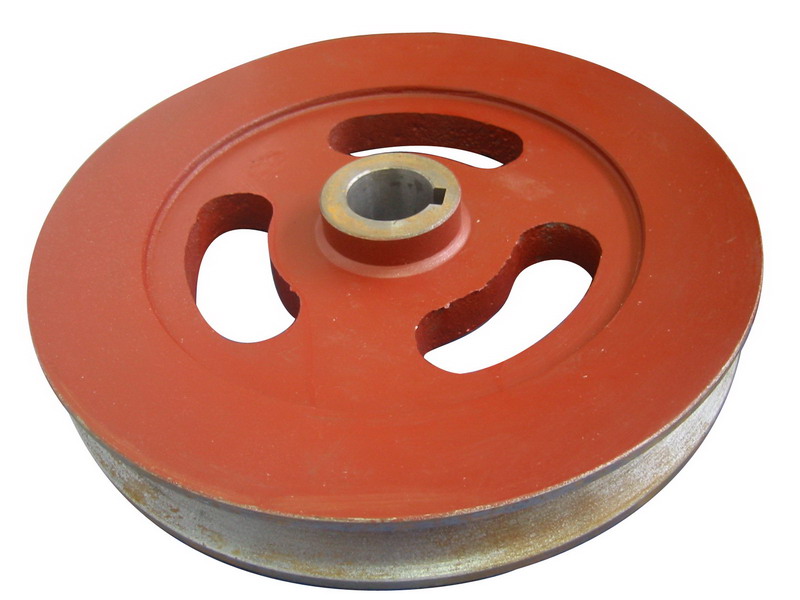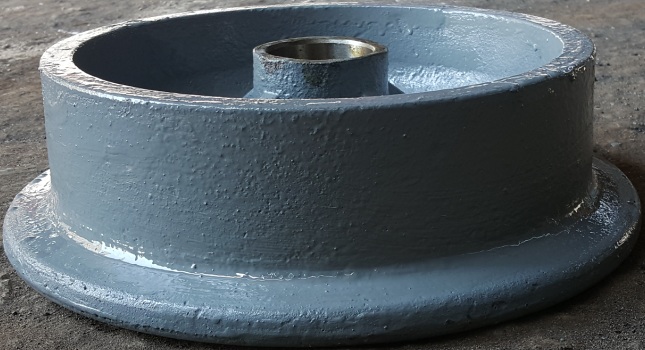Views: 0 Author: Site Editor Publish Time: 01-07-2025 Origin: Site








Casting is one of the oldest and most versatile manufacturing processes used in industries today. The method involves pouring molten material into a mold to solidify it into a particular shape. Whether it’s for construction machinery parts, automotive components, or artistic sculptures, the casting process is a pivotal technique for manufacturing a wide variety of products. Are you looking to understand the different types of casting processes available today and how they apply to your production needs?
In this article, we’ll explore the diverse types of casting processes, how they differ from each other, and how these methods are used in various industries. Whether you're considering casting for creating construction machinery parts or seeking precision for complex designs, understanding these processes will give you the knowledge to make the right choice for your production requirements.

Sand casting is one of the most widely used methods in casting. As the name suggests, sand is used to form molds for casting. It's an excellent choice for producing large or complex parts, especially in the construction machinery parts sector. The process involves creating a mold from sand and then pouring molten metal into the mold. The sand mold is typically destroyed after casting, making it a more suitable option for low to medium production runs.
Cost-effective, especially for low-volume production
Capable of handling large and complex parts
Highly versatile, suitable for a wide range of metals, including iron, steel, and aluminum
No need for expensive tooling for smaller runs
Lower surface finish quality compared to more advanced casting methods
Less precision for intricate shapes
Longer lead time for large parts
Die casting is a precision casting process commonly used in high-volume manufacturing, particularly for non-ferrous metals such as zinc, aluminum, and magnesium. This method uses a mold made from hardened steel (known as a die) and injects molten metal into the die under high pressure. The high-pressure environment allows the metal to fill intricate shapes and features with precision, making it a go-to method for mass production of automotive components and construction machinery parts.
High precision and dimensional accuracy
Smooth surface finish, reducing the need for further machining
Excellent for producing high volumes of small to medium-sized parts
High tooling costs, making it less cost-effective for low-volume production
Limited to non-ferrous metals
Requires complex machinery and skilled operators
Investment casting, also known as lost-wax casting, is a highly precise casting method used to create intricate designs. In this process, a wax pattern of the part is coated in a ceramic shell, which is then heated to melt the wax. Once the wax is removed, molten metal is poured into the ceramic mold to create the final piece. This method is ideal for producing high-precision parts in industries like aerospace, medical devices, and even for making detailed construction machinery parts.
Excellent for complex and detailed designs
High precision with minimal post-processing required
Can cast a wide variety of metals, including stainless steel and titanium
Expensive process due to the need for specialized molds and materials
High labor intensity, particularly for small runs
Longer lead times compared to other casting methods
Gravity die casting, also known as permanent mold casting, involves pouring molten metal into a reusable metal mold, typically made of steel or cast iron. The process uses gravity to fill the mold, making it slower than other casting methods like pressure die casting. However, gravity die casting is an excellent choice for producing parts that require a high degree of accuracy and durability, such as those found in the construction machinery parts industry.
High dimensional accuracy and smooth surface finishes
Reusable molds that reduce long-term costs
Suitable for metals with higher melting points, such as aluminum and copper alloys

Higher initial mold costs due to the use of metal molds
Slower production speed compared to pressure die casting
Limited to medium-sized parts with simpler geometries
High-pressure die casting is a high-speed casting process used for manufacturing parts with complex geometries and excellent surface finishes. It involves injecting molten metal into a mold under high pressure. This method is ideal for creating parts in high volumes, such as those used in the automotive and construction machinery parts industries. The precision offered by high-pressure die casting makes it an attractive option for parts that need to meet strict specifications.
Fast production rates, making it ideal for large-scale production
Superior dimensional accuracy and smooth surface finishes
Capable of producing small to medium parts with intricate features
High tooling costs, making it less suitable for low-volume production
Limited to non-ferrous metals
The need for highly specialized equipment
Shell molding is a variation of sand casting that offers improved surface finishes and dimensional accuracy. It involves creating a thin shell of fine sand mixed with resin, which is then heated to form a hardened mold. This process is commonly used for producing parts like gears, valves, and small components in the construction machinery parts sector, where high precision is required.
Better surface finish and dimensional accuracy compared to sand casting
Excellent for producing small, intricate parts
Suitable for higher-volume production than traditional sand casting
Expensive molds compared to sand casting
Limited to smaller-sized parts
Not as cost-effective for low-volume production
Lost foam casting is a newer process that combines the principles of both sand casting and investment casting. In this process, a foam pattern is coated in sand, and molten metal is poured into the mold, causing the foam to burn away. This method is particularly well-suited for producing complex, thin-walled parts, such as those used in the automotive and construction machinery parts industries.
Excellent for complex shapes and thin-walled parts
No need for traditional cores, reducing the time and cost of mold preparation
Ideal for low to medium production runs
High pattern costs, particularly for low-volume production
Limited to metals with relatively low melting points
Requires specialized equipment for pattern creation
Continuous casting is primarily used for producing long, continuous shapes such as billets, slabs, or bars. In this method, molten metal is poured into a water-cooled mold that solidifies the metal as it exits the mold. Continuous casting is commonly used in steel manufacturing and for producing parts like beams and pipes used in construction machinery.
High production rates for long, continuous shapes
Efficient material usage with minimal waste
Superior surface finish and quality
Limited to simple shapes with a constant cross-section
Not suitable for complex or detailed designs
High initial setup costs
The casting process plays a crucial role in the construction machinery parts industry. Whether it’s for manufacturing heavy-duty engine components, gears, or other critical parts, casting allows for the production of robust and durable items that are essential for the operation of construction machinery.
The versatility of casting processes enables manufacturers to produce high-quality parts in a variety of metals, such as aluminum, steel, and copper alloys. For example, sand casting is ideal for creating large parts like engine blocks, while die casting can be used to produce smaller, more intricate components like transmission housings. With a wide range of casting techniques available, manufacturers can choose the method that best suits their needs based on factors such as part size, material requirements, and production volume.
In conclusion, the casting process is a vital method for producing a wide variety of products, from construction machinery parts to intricate aerospace components. With various casting methods available, such as sand casting, die casting, investment casting, and more, manufacturers can select the process that best suits their production needs. By understanding the differences between these methods, businesses can optimize their manufacturing processes, reduce costs, and achieve superior product quality.
JOC MACHINERY CO., LTD. offers a range of high-quality casting solutions designed to meet the demands of industries like construction, automotive, and aerospace. Whether you require precision die casting for intricate parts or reliable sand casting for larger components, JOC MACHINERY CO., LTD. is here to support your production needs with advanced techniques and superior service.
A: The most common casting processes for construction machinery parts include sand casting and die casting. These methods are ideal for producing both large and small parts with excellent durability and precision.
A: Investment casting is best suited for smaller, highly detailed parts. For larger construction machinery parts, sand casting or die casting may be more appropriate due to their ability to handle bigger molds and more complex shapes.
A: Factors such as the material type, part size, production volume, and required precision influence the choice of casting process. For example, die casting is ideal for high-volume production of small parts, while sand casting is better for large, low-volume parts.
A: The casting process allows manufacturers to produce parts with superior mechanical properties, such as strength and durability. By selecting the right material and casting method, parts can be made to withstand harsh conditions typical in construction machinery applications.
A: Some casting methods, such as continuous casting, can reduce material waste and increase production efficiency. Additionally, many manufacturers are adopting sustainable practices like recycling scrap metal to minimize the environmental impact of the casting process.
Our OEM Stainless Steel/Brass CNC Machining Mid-Size Pneumatic Valve Body is engineered for precise flow control in pneumatic systems used across industrial automation, energy, and manufacturing sectors. Manufactured in Jiangsu, China, this valve body is available in premium stainless steel or brass to suit different environmental and performance requirements. With ±0.05 mm tolerance, every component meets stringent quality standards for durability and operational reliability.
The CB310 Custom Slewing Drive is engineered for solar power tracking systems and other industrial applications that require smooth, precise rotational control. Designed and manufactured in Jiangsu, China, this slewing drive integrates a single-row cross roller bearing for maximum stability, and is compatible with either DC motors or hydraulic motors, depending on your project requirements. With diameters ranging from 200 mm to 4000 mm, this drive is suitable for a wide range of solar panel arrays and mechanical systems.
Add: 20/FL., 26 North Zhongshan Road, Nanjing, Jiangsu, China
Tel: 0086-25-83317070
Fax: 0086-25-83303377
E-mail: peter@jocmachinery.com


